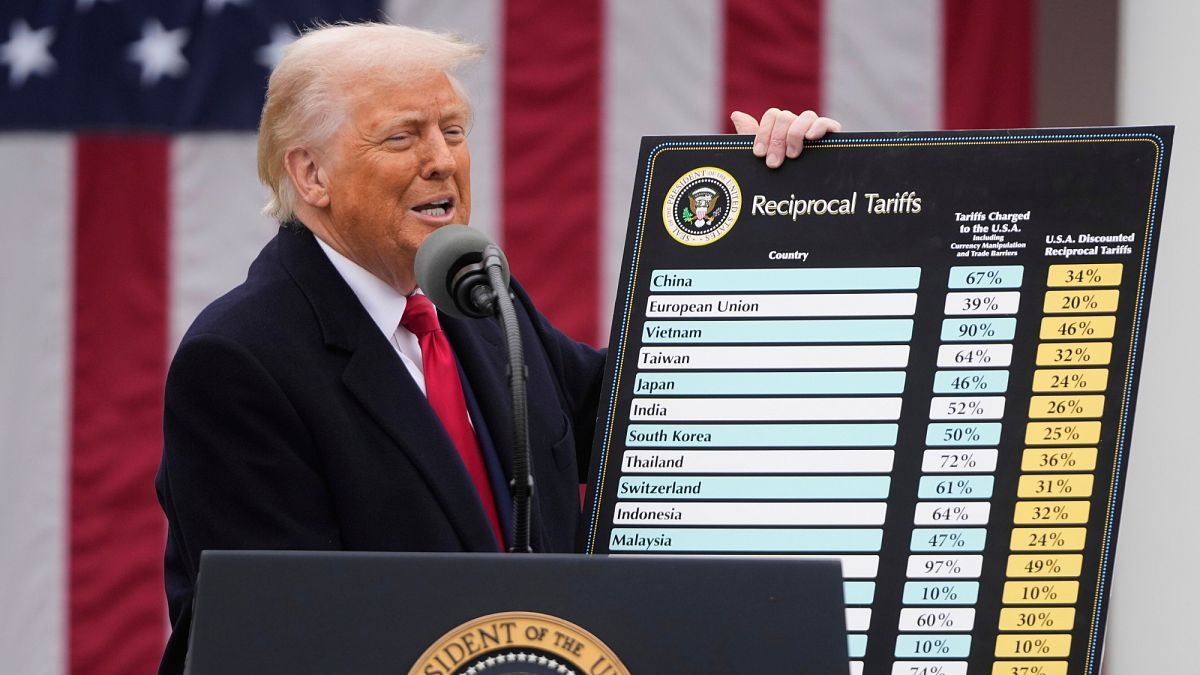US President Donald Trump unveiled the much-anticipated “Liberation Day” reciprocal tariffs in a speech at the White House Rose Garden, imposing a minimum 10% tariff on all countries and additional levies on approximately 60 nations deemed the worst offenders.
During his address, Trump displayed a chart listing the countries subject to higher tariffs, with China, the European Union, and Vietnam facing rates of 34%, 20%, and 46%, respectively. Other nations, including Japan, South Korea, India, Cambodia, and Taiwan, will be hit with import duties of 24%, 25%, 26%, 49%, and 32%, respectively.
“April 2, 2025, will forever be remembered as the day American industry was reborn, the day America’s destiny was reclaimed, and the day we began to make America wealthy again. Our country and its taxpayers have been ripped off for more than 50 years, but it isn’t going to happen anymore,” Trump declared. “Reciprocal. That means they do it to us, and we do it to them. Very simple. Can’t get any simpler than that,” he added. “We will charge them approximately half of what they are and have been charging us… So, the tariffs will not be fully reciprocal.”
The Trump administration confirmed that Canada and Mexico would be exempt from the baseline 10% tariff and reciprocal levies for now, as both nations are already subject to existing 25% import duties. Goods covered under the North American Trade Agreement will also be excluded from the new tariffs.
Additionally, steel, aluminium, and automobiles, which are already subject to import levies, will not be affected by the new reciprocal tariffs. However, Trump is expected to announce further tariffs on copper, pharmaceuticals, semiconductors, and lumber in the near future.
The baseline tariffs will take effect after midnight on 5 April, while the higher rates will be implemented from 9 April, Bloomberg reported.
Stock Markets Fall Following Trump’s Tariff Announcement
Risk-off sentiment swept through global markets in response to Trump’s tariff announcement. European stock markets had already closed by the time of his speech, but US stock futures fell sharply in extended trading, with the S&P 500 dropping 3%, the Nasdaq plunging 3.8%, and the Dow declining 1.8%.
All major technology stocks, including the so-called “Magnificent Seven,” slid between 1% and 3% in after-hours trading, with Apple leading losses, down nearly 3%. The selloff is expected to extend into Thursday’s trading session, with global repercussions.
“The overall tariff levels are on the high side, so markets need to price in a bigger shock to the economy,” said Kyle Rodda, senior market analyst at Capital.com Australia.
European stock markets ended lower ahead of Trump’s announcement, extending the selloffs seen in March. Investors are now watching for a response from the European Union. On Tuesday, European Commission President Ursula von der Leyen stated that the EU had a strong plan for retaliation while keeping the door open for negotiations.
In currency markets, the euro fell slightly against the US dollar but remained above 1.08, swinging widely in both directions amid mounting uncertainty. Commodity-linked currencies, including the Canadian dollar, Australian dollar, and New Zealand dollar, dropped sharply against the greenback, while the Japanese yen strengthened significantly as investors sought haven assets.
In commodities, gold surged to a new record high on haven demand, while industrial metals, particularly copper, slumped more than 2%, and crude oil futures fell nearly 1%.

